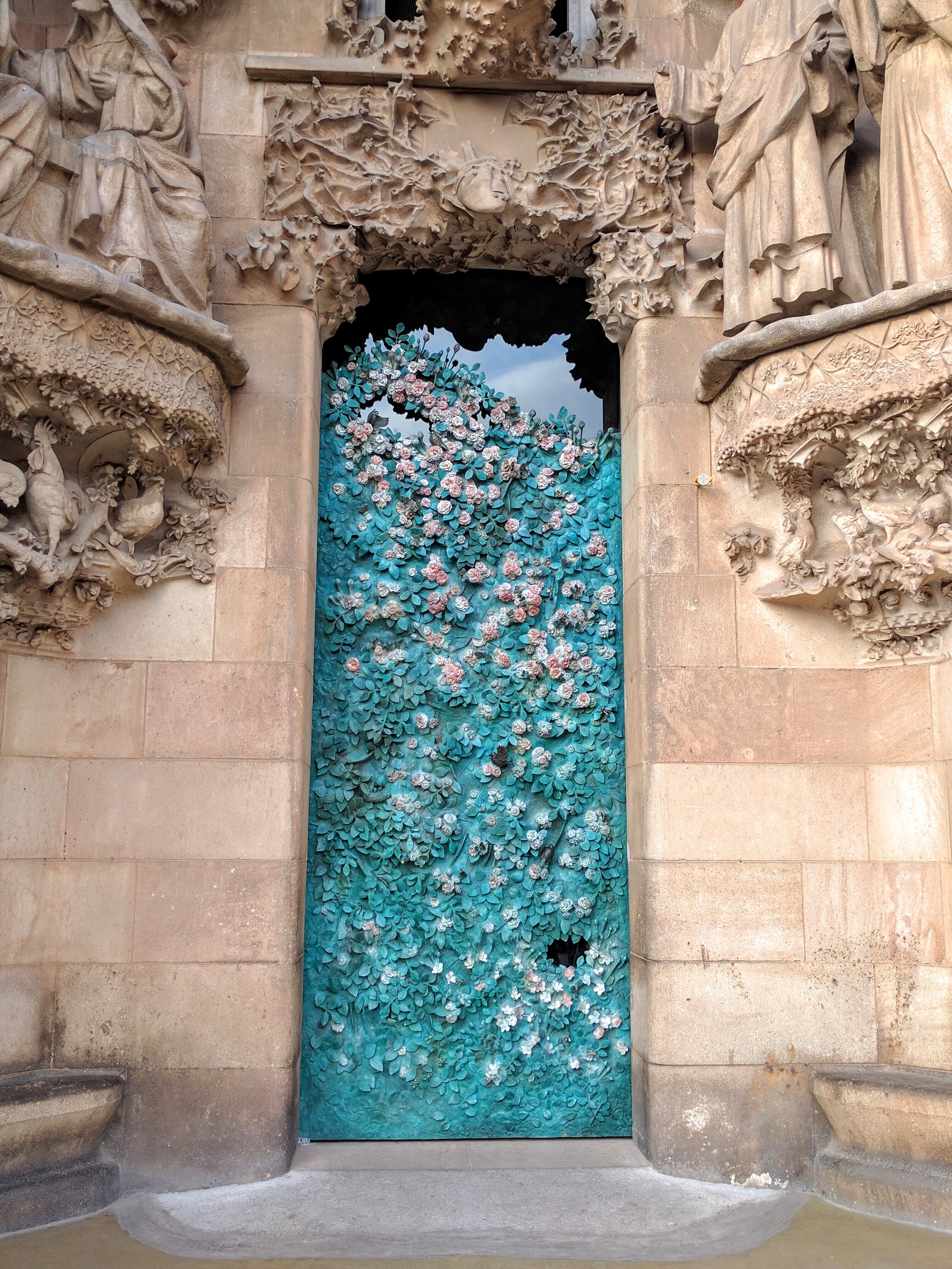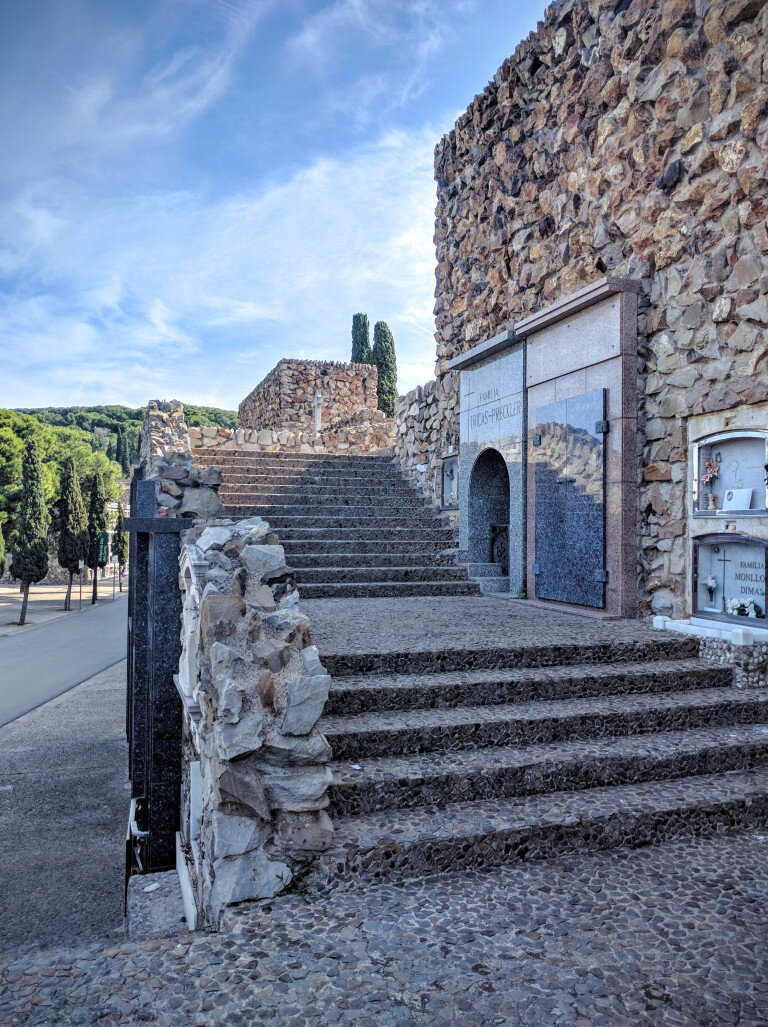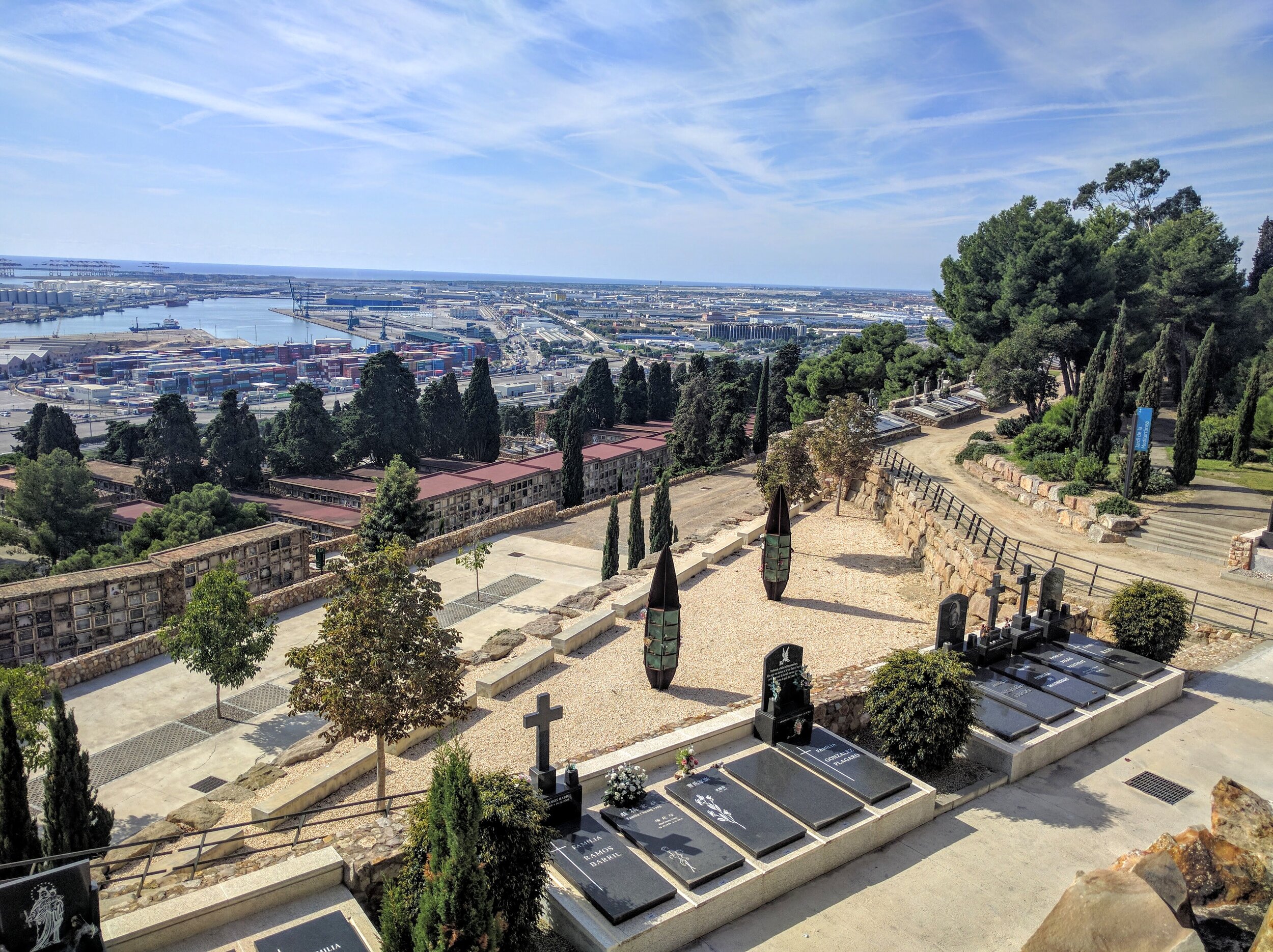Valle Diaries: Barcelona
My best friend from high school told me in early September that she was going to be in Barcelona for a conference in early October. Since I was still finding my footing in Sweden (I would never find it), I told her I would find a flight and meet her!
I got a pretty cheap flight out of Copenhagen, and arrived on a Sunday afternoon. She was staying in a business hotel near the airport which was designed in a fun Euro-modern way with big sheets of laser-cut acrylic decorating the walls of the breakfast area and bar. Unfortunately she was working the conference for most of the week, and some evenings, but we still got to see some sights together in her free moments. Our first stop together was the Sagrada Familia (of course!).
It’s hard to convey the beauty and enormity of the cathedral in photos — so I’m not going to try. It’s as breathtaking and inspiring as one might imagine, and chock full of little details that keep you captivated along the way. The references to the natural world and natural phenomena are so inspiring and, if you have been to many Catholic cathedrals, refreshing.
When I was a teenager my grandparents were generous and took me with them on a seniors trip through central Europe. I was the youngest person by at least 50 years, and the trip was basically a tour of all of the most ostentatious Catholic churches and cathedrals Germany, Austria, Switzerland, Lichtenstein, and Northern Italy (my grandparents were super Catholic). The cathedrals were gorgeous, and they create awe by molding marble, glass, gold, wood, and enamel into portraits of Jesus, saints, and other biblical figures (I have never been religious, it’s all lost on me). However, after two weeks of touring gold and marble-clad cathedrals they all started to look pretty similar. This cathedral defied so many of the aesthetic conventions of the numerous Catholic cathedrals constructed in Gothic and Baroque styles.
Architect Antoni Gaudí designed the cathedral to have many of the structural components of a Gothic cathedral, but it is imbued with gorgeous Art Nouveau elements like this enameled door surrounded by dioramas of birds and flowers. Even though many of the architectural rhythms are symmetric, none of the details or ornamentations are, there is always something new to encounter! I did not anticipate just how unique and unprecedented this work is. Literally nothing in the historical or contemporary architectural canon really comes close to designing with light, spirituality, and innovative structure in the way that this cathedral does. I was not expecting to be so profoundly humbled and awestruck by Gaudí’s genius.
On my second day I set out to find a bike, and while the first place I went to did not have the type of rental I was looking for, I happily stumbled upon the newly-developed Mercat Nou metro station and the Jardins de la Rambla de Sants. The neighborhood was formerly developed in an ‘anarchic way’, and this new development serves as a new continuous element, as well as a seemingly well-loved linear open space. The tile and detailing that I saw coming out of the station are echoed in the park, which is on top of the concrete block that supported the above-ground rail line. I thought this park had some really amazing detailing, and the tiles that they chose were gorgeous! I also appreciated that while Corten steel was in use throughout the park, it never dominated other materials, and wasn’t present in gigantic sheets as planters or retaining walls.
In Spain I noticed that on the street and in parks there were far more elderly people walking to do errands, walking with their children or aides, and hanging out together in parks — even more so than in Sweden. It was also apparent that the elderly were considered in the design of parks in Barcelona from accessible stairs, such as in this development, to outdoor strength and flexibility stations, and lots and lots of benches. Most of the parks I bumped into had a number of elderly folks hanging out in them, but this park was especially popular!
On my third day, I spent most of the day tooling around the Sants-Montjuïc hillside, touring the numerous parks, castles, and the Montjuïc cemetery. I spent the most time in the cemetery, which was opened in 1883 as Barcelona’s municipal cemetery. Driving between the airport and downtown, you cannot miss it, and the dramatic way that its mausoleums and monuments stand off the hillside, staring nobly into the sea. The design reminded me vaguely of the Memorial to the Murdered Jews of Europe in Berlin in the way that the mausoleums rise above the visitor, commanding attention, surrounding and dwarfing the human body. However, I could not feel as solemn in this place as one does when they are enveloped by the memorial in Berlin. Firstly, because I do not think that was the intent of this project, and secondly because of the texture and color of the rock facing.
I could not help thinking that if the design of this cemetery had been a contemporary competition, that the mausoleums would likely have been smooth stone in a consistent color, stark and shining under the Spanish sun. I was not initially attracted to the rock facing — it is the same material that covered our 1980s fireplace in my childhood home, and I thought it was so ugly then. However, I can appreciate that the texture of the rock in this application subdues the harsh light — which a smooth stone would only reflect, creating a harsh environment in which to pray or meditate, and the colors and texture of the rock are also playful and warm. While death is certainly sad, there is no reason that the space in which we contemplate the phenomenon has to be austere.
The rock also made me feel like the strong geometry of the mausoleums could come tumbling down at any moment. The stacks of rock seeming so organic and unwieldy in comparison to a common image of perfectly-aligned brick, wood planks, or concrete slabs. Tumbling rocks conjure the inertia or inevitability of life as it goes on, and death as a transition into its next phase.
This hill area is also home to the National Museum, the Castell de Montjuïc, and lots and lots of gardens.
After coming down off the hillside, I rode along the waterfront to find lunch, and after relaxing with that view and a glass of wine, ventured back into the city where I bumped into a part of the Gothic Quarter that was all kinds of artisan shops and makerspaces. Fashion ateliers, woodworking shops, jewelry shops, and shoemakers were all working in these spaces and selling their wares in the front. It is such a wonderful concept to have this kind of district. The narrow alleyways were beautiful, if hard to navigate, and most were decorated with garlands, banners, and lights.
Lastly, I was very impressed with Barcelona’s cycling infrastructure, but also little moments like this were incredible — helpful little signs pointed transit users in the direction of their bus. Why can’t we have more of these in the States?!
















